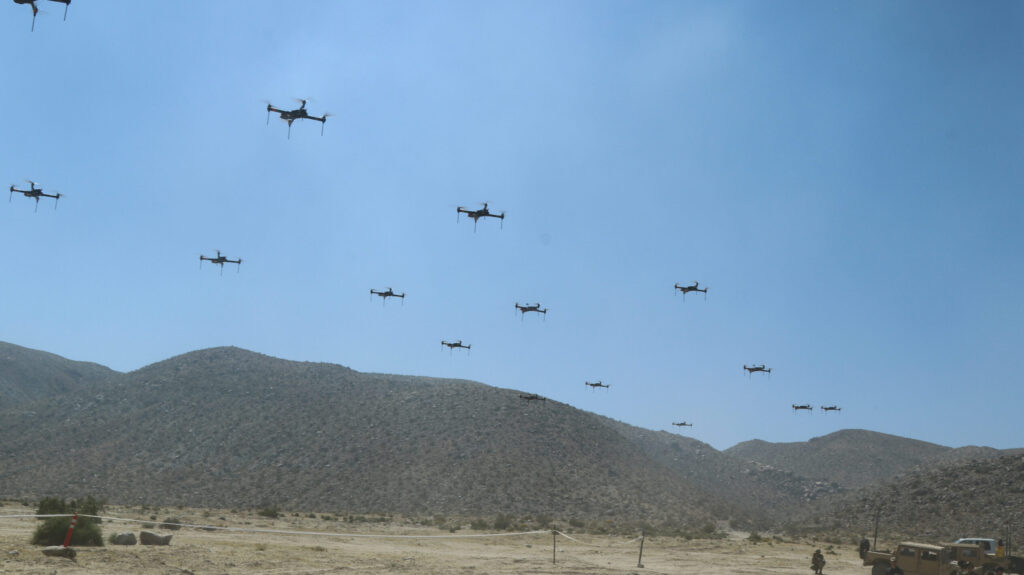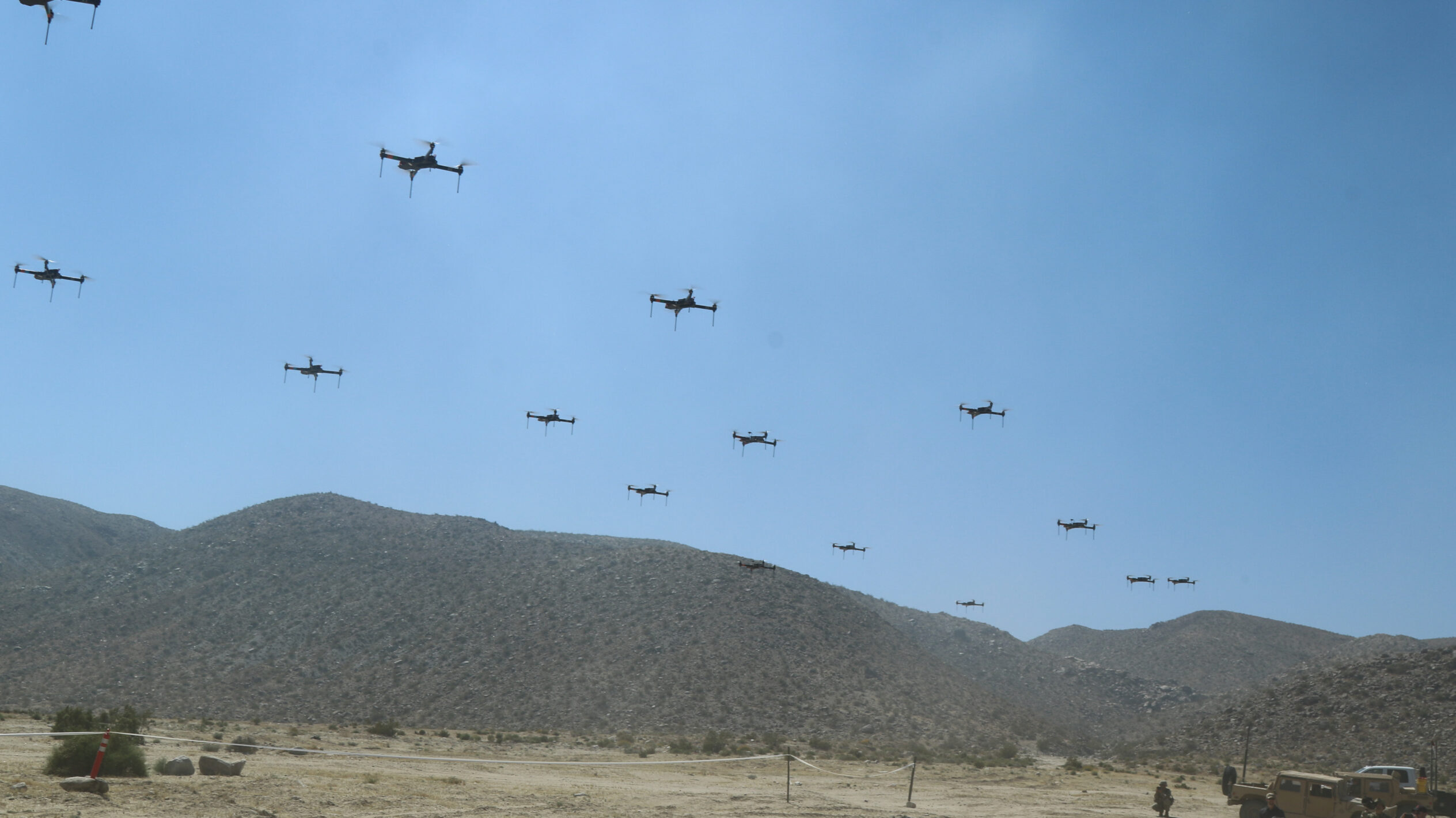

The 11th Armored Cavalry Regiment and the Threat Systems Management Office operate a swarm of 40 drones to test the rotational units capabilities during the battle of Razish, National Training Center on May 8th, 2019. (U.S. Army/James Newsome)
WASHINGTON — Lockheed Martin this month wrapped up its second demonstration with Verizon showcasing how 5G-enabled drones can transfer intelligence, surveillance and reconnaissance (ISR) data from aircraft in flight to geolocate military targets, the company announced today.
The September demonstration followed a May event, both of which were held at Lockheed Martin’s 5G test range in Waterton, CO,. The tests are part of an ongoing 5G collaboration announced between the two companies last year and haven’t actually been applied to any Defense Department missions — nor do they have any DoD customers signed up. But the ability to share data in new ways is vital to the Pentagon’s JADC2 efforts to better connect sensors and shooters, and the companies seem confident that they can win support within the department.
During the demonstrations, four 5G-enabled rotary wing drones flew simulated missions while linked to two Vertizon on-site private network nodes. Those nodes enabled the secure transfer of the ISR data coming off the drones, and moved the data between a 5G private network and a surrogate public network, according to a Lockheed press release.
Dan Rice, vice president of 5G.MIL programs at Lockheed Martin, told reporters Tuesday that the ability to bring in private 5G networks “and have them be available in operating environments like ours and like our customers will need and be able to move seamlessly between those private networks and public networks, while securing the data, I think is an important advancement for 5G.“
In May, the companies began by identifying the technology, geolocating RF emitters and moving streaming video data from the swarm of four flying drones against a stationary ground target. This month, the companies tested the same capability, but against moving targets. Lockheed Martin and Verizon are planning to hold a third demonstration in November, and ultimately, the plan is to do this in an air-to-air scenario, Rice said.
RELATED: The ‘Kinetic Pendulum’: How the Army wants to defeat drone threats
The demonstrations successfully showed two key advances in technology that can provide critical advancements for DoD, according to the Lockheed press release: Real-time ISR radio frequency and streaming video data was transmitted over 5G millimeter wave links and data was displayed in a livestream video feed. In theory, those capabilities should provide enhanced levels of command and control for commanders in the field. The technology also passively detected or geolocated radio frequency signals that could be used for communications, sensing or jamming.
“There are going to be a number of challenges to overcome the closer and closer we get that we should not overlook, Rice said. “That includes the resilience of both the network and the waveform…We’re working on a number of different approaches to introduce different alternate waveforms both within the constraints of the [3rd Generation Partnership Project] standards definitions, but then looking beyond that at ways to make non-standard adaptations in those waveforms to improve resilience as well.”



